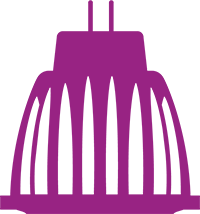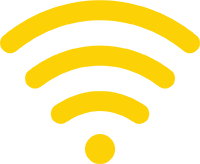Welcome To The EDNA Publications Area
Policy development on energy efficiency of data centres
For data centre energy efficiency, this report provides: overview of data collection/registration projects, overview of current/planned government measures, quantitative estimates of savings from possible measures, and issues for policy makers to consider.
Policies for Data Centre Energy Efficiency: Scope, Trends and Availability of Data
This report proposes a definition and characterisation of data centres, presents trends in their energy use, and analyses the availability of data which might be used as inputs to energy efficiency metrics.
Emerging Battery Technologies
This research study examines new battery technologies suited to powering small devices such as IoT, actuators and sensors, and portable devices such as mobile phones and laptops.
Guide to Energy Management Protocols
This report is a guide to ‘application layer’ communications protocols used for energy management, such as those used to facilitate intelligent efficiency and demand flexibility.
Mobile Device Efficiency
This report analyses the energy use of mobile devices, compares policies and identifies policy gaps.
Standardisation for Smart Devices
This report highlights the most relevant standards in areas such as measurement of energy consumption of smart devices, and communication protocols for smart devices.
Interoperability
The objective of this study is to gain a better understanding on the issue of (a lack of) device interoperability and the resultant impact of this on Intelligent Efficiency and Demand Flexibility.
Energy Efficiency Metrics for Data Centres
This study explores the existing metrics for data centre efficiency, and identifies which metric(s) might be suited for use by policy makers.
Are We Getting the Best Out of Smart Home Technologies? The Role of Usability
This joint report with the Users TCP investigates ‘usability’ issues associated with energy smart digital devices.
Data Centre and Server ‘Idle Coefficients’
This report presents information on novel data centre KPIs: the Server Idle coefficient and the Data Centre Idle Coefficient.
Small Network Equipment: Considerations for Energy Efficiency Policy
This report provides an overview of small network equipment (e.g. routers and modems), investigates options for policies and estimates the potential for energy savings.
Retrofitting Connectivity for Energy Benefits
This report examines the retrofit solutions on the market today to identify those that could be leveraged to achieve energy benefits in otherwise unconnected residential products.
Harnessing IoT for Energy Benefits
This report examines the landscape of residential IoT products and the functions within those products that can be leveraged to yield energy benefits.
Total Energy Model V2.0 for Connected Devices
This report describes updates to the Total Energy Model that was developed by EDNA to estimate the ‘total energy use’ of connected devices, globally.
Roadmap for Consumer Devices to Participate in Demand Flexibility
The purpose of this report is to provide technical assistance and policy guidance to support national or regional government organisations, utilities, and/or energy regulatory bodies in
Energy Applications within IoT and Digitalisation Strategies
The purpose of this report is to provide guiding principles to policy makers for developing and implementing national/regional digitalisation and IoT strategies that emphasise energy
Policy Guidance for Smart, Energy-Saving Consumer Devices
This report provides considerations for policy makers to encourage ‘smart’ consumer devices which save energy and provide demand flexibility. It includes key findings for the prioritisation of consumer devices and policy recommendations.
Test Procedures for Measuring Network Standby Power
This paper examines elements of existing test procedures that address network standby in some way. This includes horizontal test procedures that cover standby and network standby for a wide range of products, as well as product-specific procedures where network functionality is a common or essential feature of the product
Global Forecast of Energy Use for Wireless Charging
In this report, we have built on the modeling methodology published in a recent white paper by Natural Resources Defense Council (NRDC) and Suzanne Foster Porter of Kannah Consulting
Bridging the Network Standby Gap between Mobile and Mains-Powered Products
An integrated, energy-optimal design approach, in which disparate engineering teams collaborate iteratively toward energy optimization goals (including low network standby energy use), is currently the




































